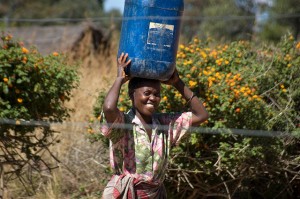
By Margaret Kroma, Assistant Director General, Partnerships & Impact, World Agroforestry Centre
Rural and smallholder women face tremendous obstacles in agricultural production and in strategically participating in crop value chains. But it is not enough to remove obstacles alone, or to increase women’s participation in tree product value chains if the ultimate goal is women’s empowerment.
The research literature is replete with evidence that women participate in the management, utilization and marketing of tree products, and that this participation contributes to food security and household incomes. Policy recommendations point to the importance of increasing women’s access to productive resources including technologies, financial and extension services as well as markets. Yet notwithstanding decades of work to expand women’s access to these resources, a decisive transformation has yet to occur. As it turns out, addressing gender is not so straightforward after all!
Gender research should tackle the structural roots of the problem, going beyond a simple focus on women as victims of the underlying patriarchy. It should look at why, for example, as the literature shows, wide gaps exist between men and women in the benefits they receive from productive resources, even in situations where both have relatively equal access. Equally, gender research should focus on how community control over landscapes, often vested in older males, affects the tenure and land rights of different social groups, and the uneven and dynamic relations of power within households and communities.
This is an exciting moment as ICRAF re-launches the newsletter of the gender cross-cutting theme within the Forests, Trees, and Agroforestry (FTA) research program of the CGIAR. The FTA’s Gender Integration Team is committed to integrating relevant gender dimensions into research, as we recognize that such research can contribute substantially to the post-2015 Sustainable Development Goals (SDGs), which are captured in the strategic results framework of the CGIAR consortium.
If the SDGs are to be achieved, the focus will necessarily need to go beyond female farmers and their relative lack of access to productive resources. We will need to aggressively spearhead proven, effective policies that dismantle structural barriers. For example, we need policies that strengthen land rights; that increase the diversity of decision-makers in agriculture; and that introduce innovative financing and extension schemes that enable men and women from different socio-economic backgrounds to participate in the top tiers of agri-value chains.
As the SDGs gather momentum in the landscape of development, let us marshal all of our efforts to generate the research evidence that governments and boundary partners desperately need to focus on the right policy targets and impacts – identifying and dismantling the structural barriers to rural women’s empowerment!
March 5, 2015











